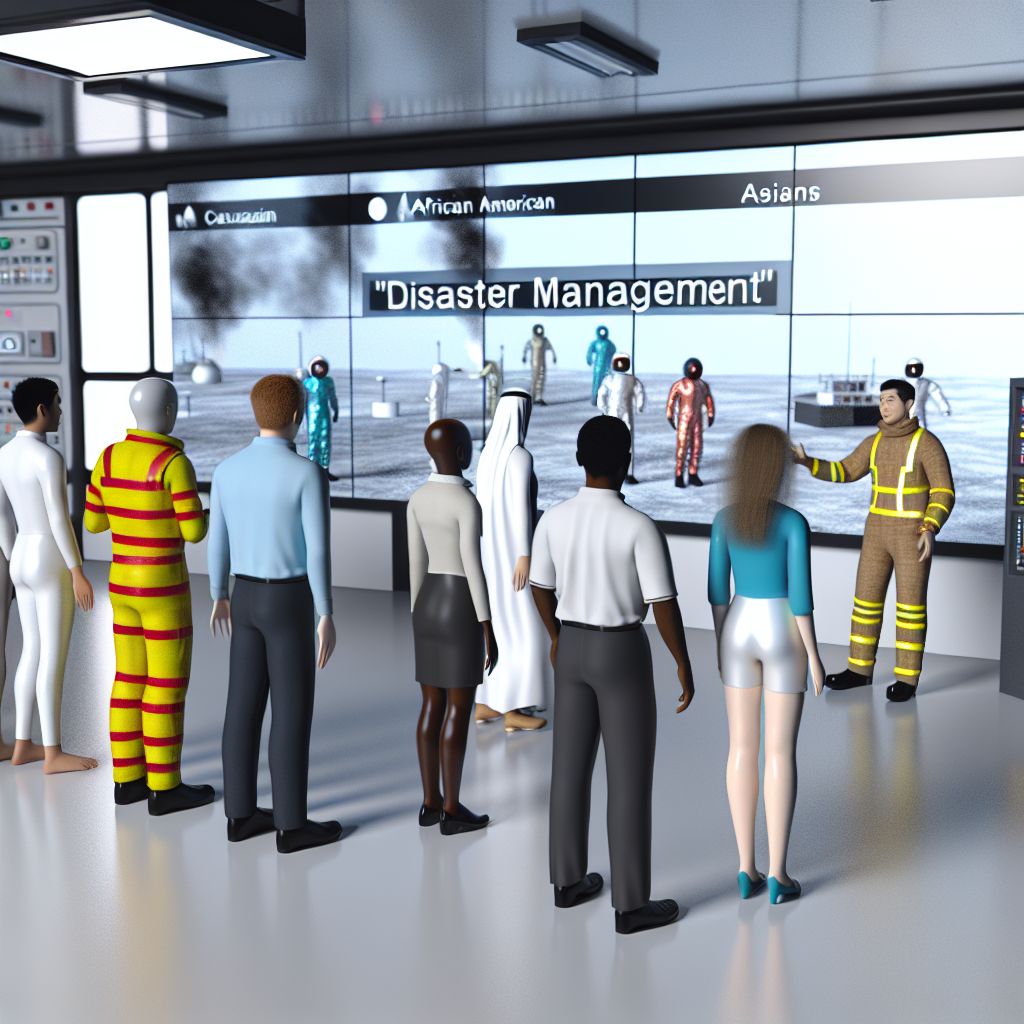Deutsch: Katastrophenmanagement / Español: Gestión de desastres / Português: Gestão de desastres / Français: Gestion des catastrophes / Italiano: Gestione dei disastri
Disaster Management in the Space industry context refers to the application of space-based technologies and systems to prevent, prepare for, respond to, and recover from natural or man-made disasters. This involves the utilization of satellites for Earth observation, communication, and navigation to enhance the effectiveness of disaster management efforts on the ground. Space technologies provide Critical data and infrastructure for monitoring environmental conditions, alerting to impending disasters, coordinating rescue and relief efforts, and assessing damage to aid in recovery and rebuilding.
Description

The space industry plays a pivotal role in modern disaster management strategies. Satellite Imagery and data are instrumental in monitoring and predicting weather patterns, such as hurricanes, floods, and droughts, allowing for early warning and preparedness measures. During and after disasters, satellite communications enable emergency responders to Coordinate efforts, especially in areas where terrestrial communication networks are damaged or nonexistent. Furthermore, Global Navigation Satellite Systems (GNSS) Support navigation and Logistics for disaster relief operations.
Application Areas
Disaster management in the space industry encompasses several key applications, including:
- Early Warning Systems: Using satellite data to predict and warn about natural disasters like storms, volcanic eruptions, and tsunamis.
- Emergency Communication: Providing reliable communication channels for disaster response teams when ground-based infrastructures are compromised.
- Damage Assessment and Mapping: Utilizing remote sensing to create detailed maps of affected areas for use in response planning and damage assessment.
- Environmental Monitoring: Continuously observing Earth's surface and Atmosphere to detect and analyze environmental changes that could lead to disasters.
Well-Known Examples
Notable examples of disaster management utilizing space industry capabilities include:
- The use of the Global Positioning System (GPS) for coordinating rescue operations during natural disasters.
- Satellite imagery analysis by the United Nations Satellite Centre (UNOSAT) to assess flood impact and guide relief efforts.
- The Disaster Monitoring Constellation (DMC), a network of satellites providing emergency Earth observation data to support disaster response.
Treatment and Risks
Implementing disaster management strategies in the space industry involves several considerations:
- Data Accessibility and Sharing: Ensuring timely and open Access to satellite data for disaster response agencies worldwide.
- Interoperability and Standards: Developing common standards and protocols for data exchange and communication between different satellite systems and ground-based infrastructure.
- Sustainability and Coverage: Maintaining a sustainable orbiting infrastructure that can provide comprehensive global coverage for monitoring and response.
Similar Terms or Synonyms
- Space-based disaster response
- Satellite disaster management
- Emergency management with space technology
Summary
Disaster management in the space industry context highlights the essential role of space-based technologies in enhancing our ability to manage natural and man-made disasters. Through early warning systems, emergency communications, damage assessment, and environmental monitoring, the space industry provides critical support for saving lives, reducing economic losses, and facilitating efficient recovery and rebuilding efforts.
--
Related Articles to the term 'Disaster Management' | |
| 'Earth Observation' | ■■■■■■■■ |
| Earth Observation in the space industry context refers to the process of monitoring and collecting data . . . Read More | |
| 'Satellite Imaging' | ■■■■■■■■ |
| Satellite Imaging in the space industry refers to the capture of images of Earth or other Celestial bodies . . . Read More | |
| 'Space Infrastructure' | ■■■■■■■■ |
| Space Infrastructure refers to the network of physical structures, systems, and facilities that support . . . Read More | |
| 'Vegetation' | ■■■■■■■ |
| Vegetation in the context of the space industry refers to the study and monitoring of plant life on Earth . . . Read More | |
| 'TerraSAR-X' | ■■■■■■■ |
| TerraSAR-X is a German Earth observation satellite that uses Synthetic Aperture Radar (SAR) to deliver . . . Read More | |
| 'Ground Station' | ■■■■■■■ |
| Ground Station in the space industry refers to a terrestrial facility equipped with antennas, communication . . . Read More | |
| 'High-definition' | ■■■■■■ |
| High-definition in the space industry context refers to the use of advanced imaging and data collection . . . Read More | |
| 'Research and Development' | ■■■■■■ |
| Research and Development (R&-D) in the space industry context refers to the systematic activities . . . Read More | |
| 'Satellite Communication' | ■■■■■■ |
| Satellite Communication in the space industry context refers to the use of artificial satellites to transmit . . . Read More | |
| 'Satellites and Spacecraft' | ■■■■■■ |
| Satellites and Spacecraft: Satellites and spacecraft are essential technologies in the space industry, . . . Read More | |
